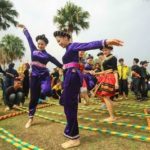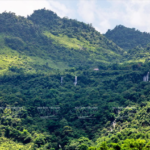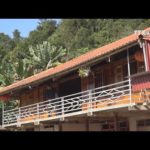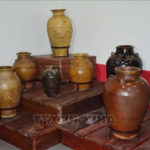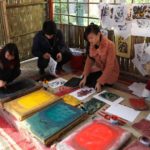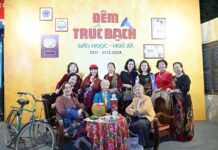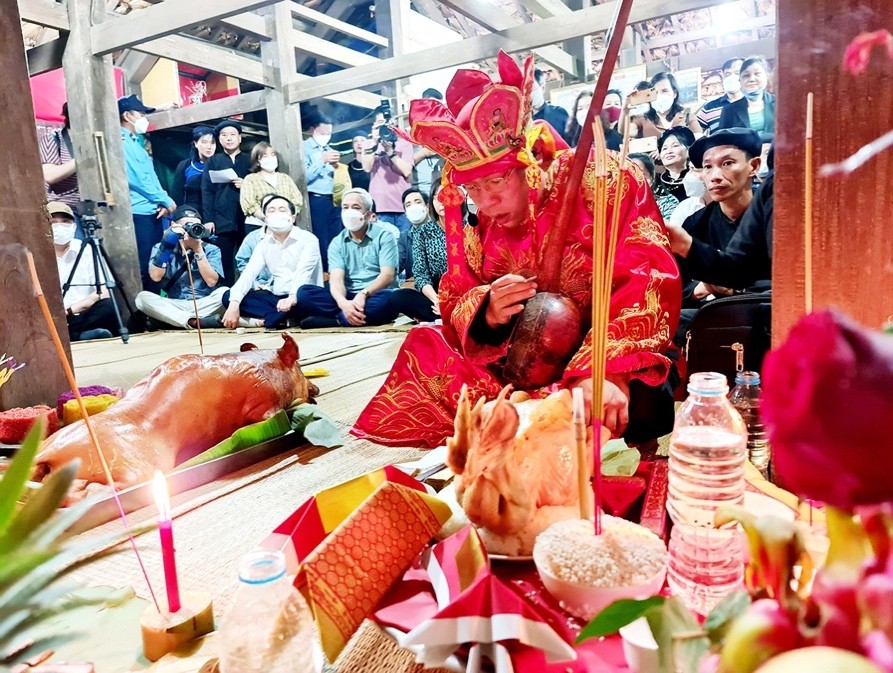 |
| The re-enactment of a Ritual to pray for happiness and prosperity and against bad luck of the Tay ethnic group in Phu Luong district, Thai Nguyen province. Source: giaoducthoidai.vn |
A series of activities marking Vietnamese Ethnic Groups’ Culture Day are taking place at the Vietnam National Village for Ethnic Culture and Tourism in Hanoi’s suburban of Son Tay from April 16-19.
Vietnamese Ethnic Groups’ Culture Day is celebrated on April 19 annually to honor the cultural values of ethnic groups and Vietnam’s cultural diversity.
Vietnam is home to 54 ethnic groups, each of which has its own unique cultural identity. Participating in activities to celebrate Vietnam’s Ethnic Culture Day this year, there are 17 ethnic communities from 13 provinces and cities representing all ethnic groups and regions in the country. In which, 100 people of 13 ethnic groups are working daily at the Vietnam Ethnic Culture and Tourism Village, including village elders, village chiefs, artisans, and ethnic people of Mong, Thai, Kho Mu, Tay , Dao, Co Tu, Ba Na, Xo Dang, Ede and Khmer.
The highlight of the cultural event is a traditional market from the northern province of Son La, scheduled for the upcoming National Reunification Day (April 30) and May Day (May 1) holidays.
It will feature ten stalls of Son La introducing local farm products and food and 20 others displaying specialities from other northern localities – Dien Bien, Ha Giang, Hoa Binh and Thai Nguyen provinces, and Hanoi’s Ba Vi district, along with tourism stalls.
Visitors will also be treated to photo exhibition featuring lotus in Vietnamese cultural life, meeting with artisans who have made contributions to the conservation and promotion of ethnic cultural traditions, musical programme, folk games, and performances of the art of khèn (panpipe) of the Mong ethnic group.
It also re-enacts tradition festivals and customs of several ethnic minority groups such as: “Cap sac” (maturity ritual) of Dao group, New Rice Festival of Gia Rai group, and Chol Chnam Thmay Festival of Khmer group.
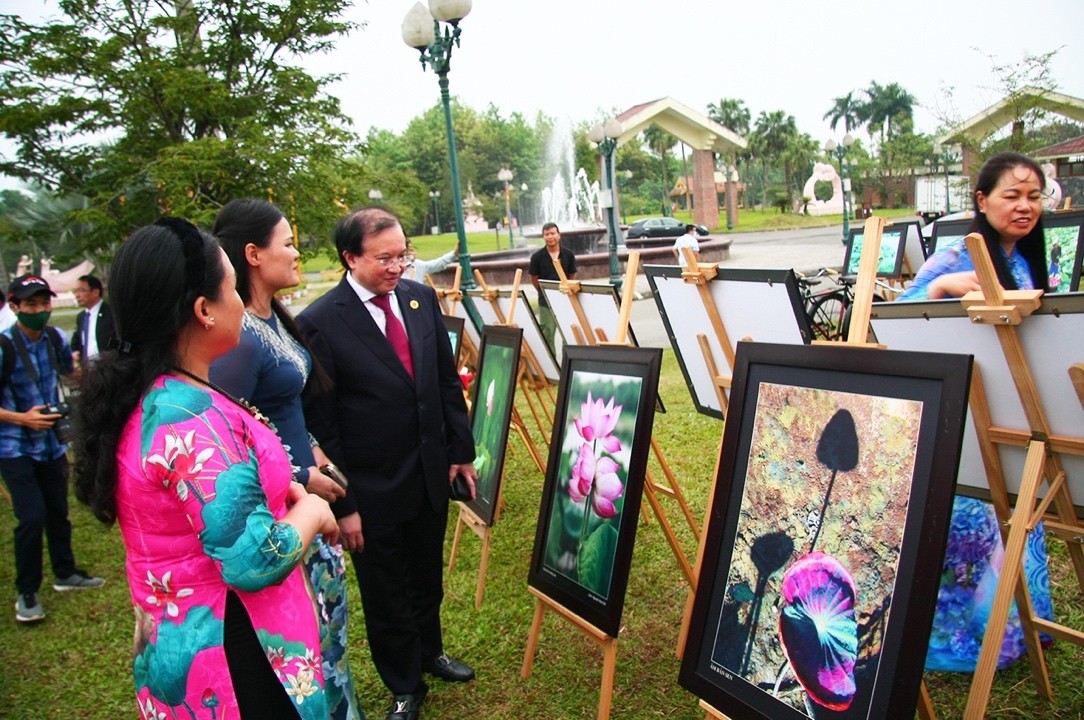 |
| The exhibition introduces 100 photos of lotus with the theme “Lotus flower in Vietnamese cultural life” by Vietnamese photographers. Source: giaoducthoidai.vn |
Speaking at the opening ceremony themed “Lotus flower in Vietnamese cultural life”, an impressive highlight in the series of events to celebrate the Cultural Day of Vietnam’s Ethnic Groups, Deputy Minister of Culture, Sports and Tourism Tourism Ta Quang Dong emphasized that Vietnam’s Ethnic Culture Day is an annual event organized by the ministry which is an event of profound political significance, contributing to honoring, preserving and promoting the traditional cultural values of the ethnic groups.
In which the “Lotus flower in Vietnamese cultural life” space is one of the main activities of the event, contributing to honoring the image of the lotus associated with the charm of Vietnamese women in particular and the lotus in daily life as well as Vietnamese culture in general. This is also an opportunity for Hanoians and tourists to enjoy beautiful images at this space, Dong stressed.
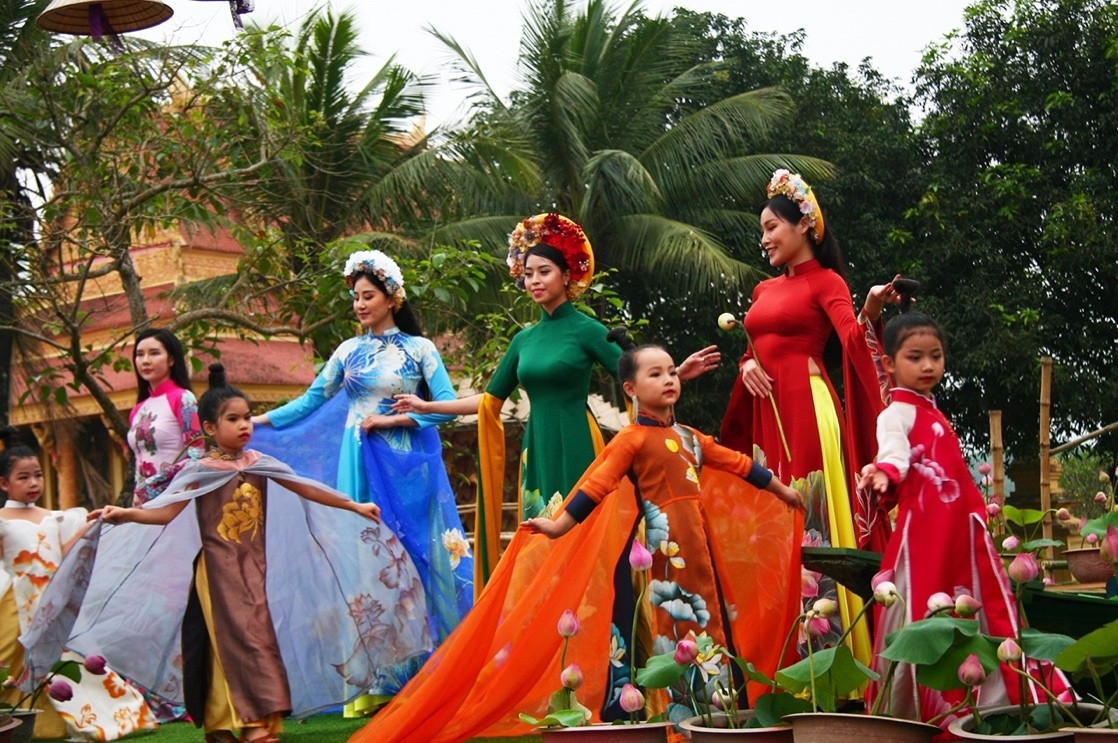 |
| Ao dai fashion show is one of activities to honor the image of lotus associated with the graceful beauty of Vietnamese ao dai. Source: giaoducthoidai.vn |
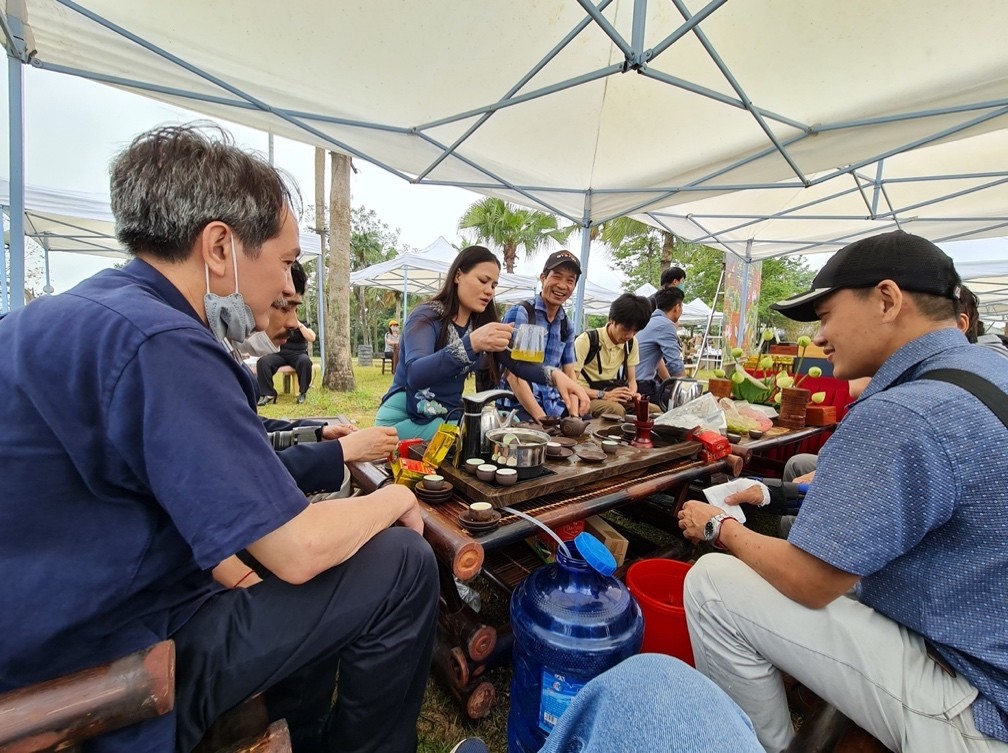 |
| Artisans with products made from lotus such as lotus tea, cakes, candy and traditional products for tourists. Source: giaoducthoidai.vn |
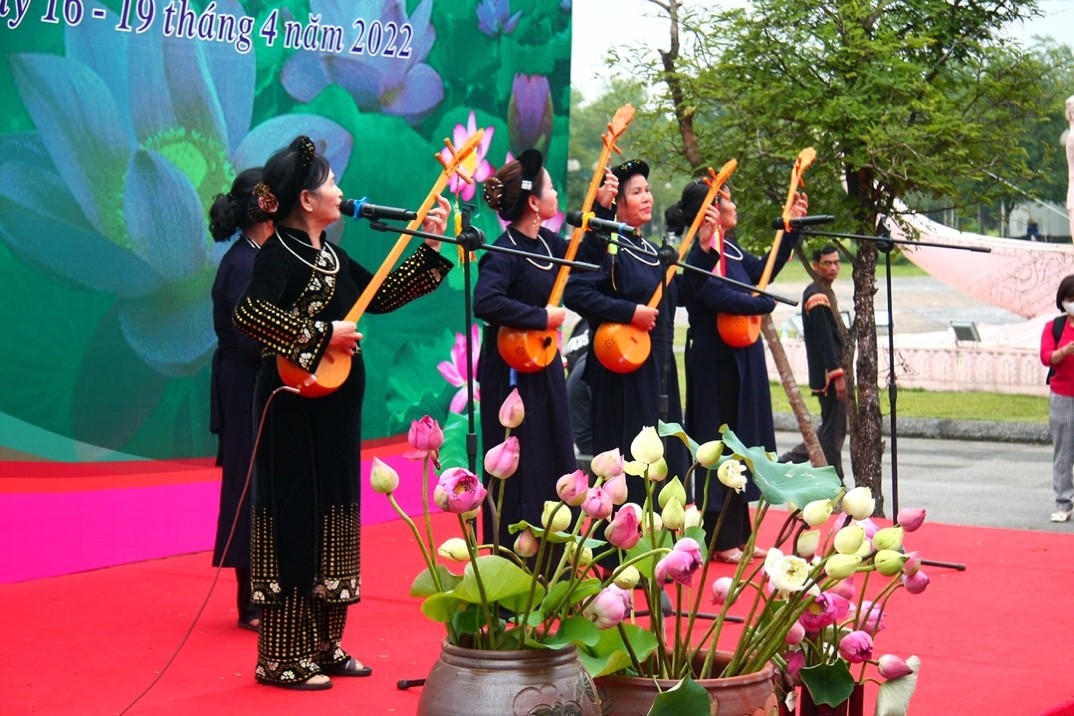 |
| Ethnic women perform their traditional dance. Source: giaoducthoidai.vn |
 |
| A performance of the art of khèn (panpipe). Source: congthuong.vn |
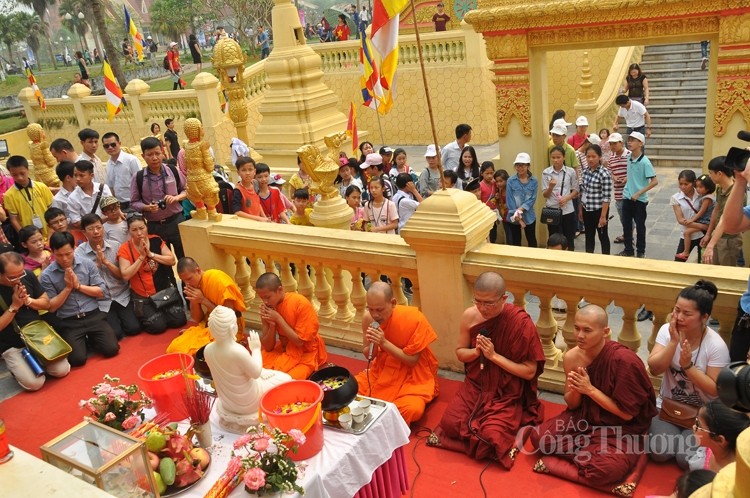 |
| A rite of Chol Chnam Thmay – the traditional New Year festival of the Khmer ethnic people. Source: congthuong.vn |
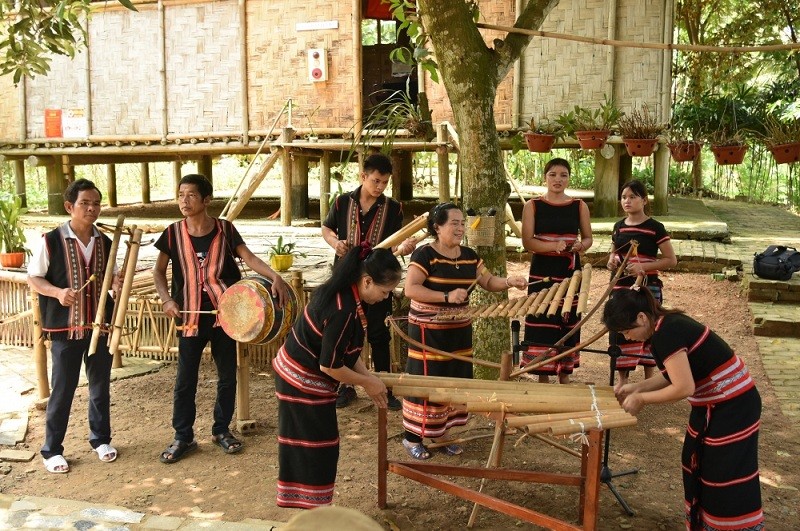 |
| Xo Dang ethnic cultural space. They are an ethnic minority of Vietnam people living in the northern part of Gia Lai and Kon Tum provinces. Source: congthuong.vn |
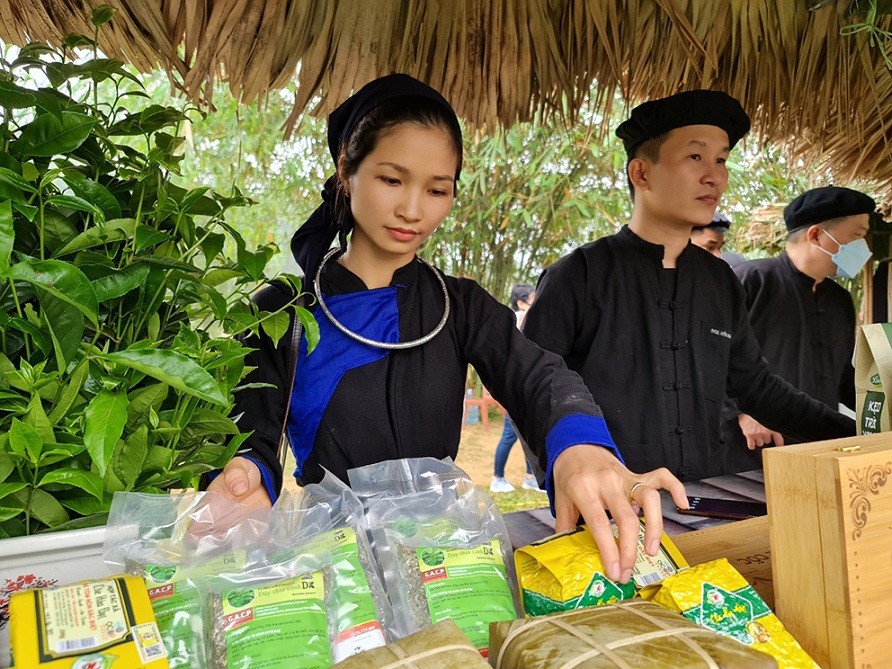 |
| Tea, honey, chung cake, day cake of the Tay people in Phu Luong district of Thai Nguyen are also brought to Vietnam’s Ethnic Culture Day to serve visitors. Source: giaoducthoidai.vn |
Lang Son promotes community-based tourism
Blessed by nature with beautiful scenery and products, many localities in Lang Son province have taken advantage of these attributes to build a community-based tourism model.

